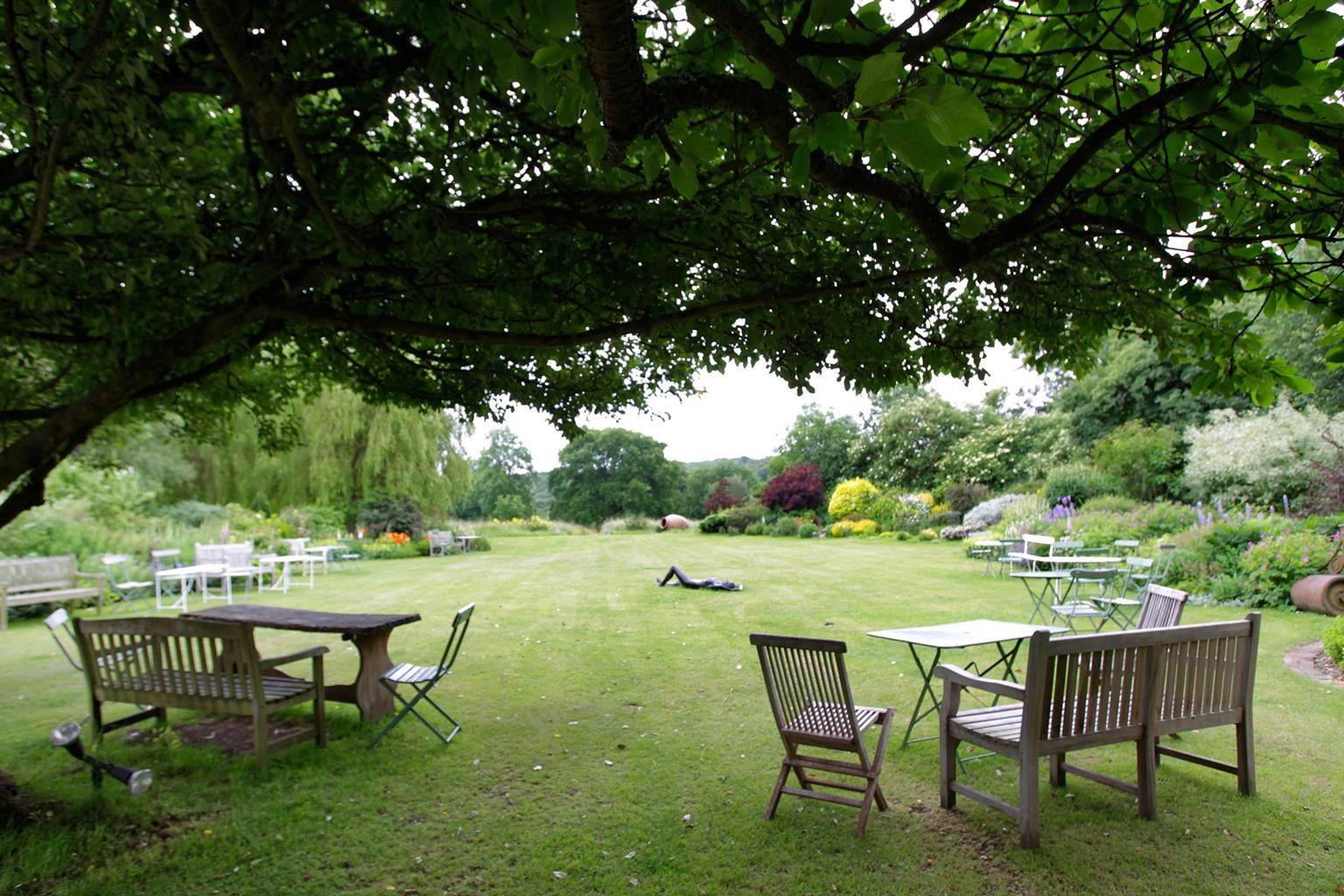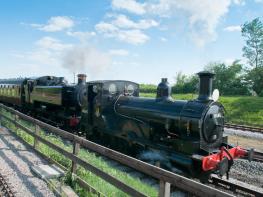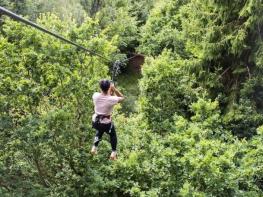Hartwell House is a beautiful and historic hotel set in 90 acres of unspoilt parkland. The grand…
From the Hartwells to the River Thame

5 miles (8kms)
About the walk
'Why wouldst thou leave calm Hartwell's green abode…
Apician table and Horatian Ode?'
So wrote Lord Byron on Louis XVIII's departure for France to assume his throne in 1814.
Few hotels can boast such a royal connection, but it was in the library of Hartwell House, just outside Aylesbury, that its most famous resident, Louis XVIII, exiled King of France, signed the accession papers to the throne. Louis leased the house between 1809 and 1814, staying here with his court during the Napoleonic wars. The Queen of France died here during this period, and her coffin was taken from Hartwell to Sardinia.
Hartwell House
One of England's finest stately homes and grandest country hotels, Hartwell House was built for the Hampden and Lee families, ancestors of the American Civil War soldier, General Robert E Lee, during the 17th and 18th centuries. Now a Grade I-listed building, the house has many Jacobean and Georgian features, magnificent decorative plasterwork, ceilings and panelling, fine paintings and antique furniture.
The philanthropist Ernest Edward Cook (grandson of tourism pioneer Thomas Cook), an important benefactor of the National Trust and National Art Collections Fund, bought Hartwell House and its estate from the Lees in 1938. He was also a founder of the Ernest Cook Trust, which, in the mid-1980s, made Hartwell House and its parkland available to Historic House Hotels for a major restoration and conversion. Only hotel guests can proceed beyond the main gates, so if you want to see inside Hartwell you will have to book for dinner or afternoon tea – which is served in either the Morning Room, Drawing Room, Great Hall or Library.
The entrance to the house is via a porch flanked by pillars of carved stone and a carved doorway. Set above all this is a splendid oriel window sitting on intricately embroidered stone corbels. The Great Hall is an imposing room in English baroque style, built by James Gibbs in 1740. The rococo Morning Room with its decorated ceiling and door cases, the adjoining Drawing Room and the Library, are all Georgian and date from about 1760. The principal Dining Room was added in the 1980s by Eric Throssell when a major conversion took place, and reflects the style of the early 19th-century architect Sir John Soane. Hartwell stands in 90 acres (36ha) of parkland, which was laid out by a pupil of the eminent landscape designer Lancelot ‘Capability’ Brown. Its proximity to Chequers means that it has frequently hosted international and domestic government summits and important meetings.
Walk directions
From the A418, turn into Bishopstone Road and keep to the left of the church. Go through a kissing gate and walk along to the footpath beside Manor Farm Close. Cross to a gate leading out to a recreation ground. The gate pillars, left, recall the villagers who died in the two World Wars. Exit to the road, cross over to a footpath sign and follow the drive. Just before a garage and shed, turn right and follow the path round. Go through a gate and follow the path to the road. Turn right, walk to the A418, with the Rose and Crown to the right.
Turn sharp left at the corner and follow the path beside a wall. Head for the road, bear right and walk along to Hartwell House. Note the ornate bridge to the right, but go left (with the Spa Café and Bar to the right), and at the gate take the path beside the pillar on the left. Go through a kissing gate, pass the church, right, and the graveyard, left. Turn right at the road and pass the Egyptian Well. Continue ahead to pass Lower Hartwell Farm, then turn left at the footpath. Cross a stile and two fields, walking straight ahead, then turn right immediately beyond a plank bridge.
Skirt the field, keeping the hedge on your left, and continue ahead on the North Bucks Way, heading towards Waddon Hill Farm. At the farm buildings turn left at the waymarker and follow the track out across the fields. Keep alongside a hedge initially, then go through one field and enter another. When the path veers left, branch off right along a narrow path through an arable field, making for a gate. Go through the squeeze stile alongside it and cross a meadow to reach the River Thame. Swing left at the river bank to a gate and join the Thame Valley Walk.
After about 100yds (91m) go through a second gate. The path follows a stream (perhaps hidden, right) to the next gate, where you rejoin the river bank. Follow the Thame, continuing on the waymarked trail. Pass a broken kissing gate and go over a footbridge, then cross another footbridge at a weir. Opposite is lovely Weir Lodge. Join a concrete track via a stile and follow it towards trees.
Once in the trees, the Thame is on the left. To the right is the parkland of Eythrope. At the next junction take a short detour right and cross a picturesque bridge to see Bridge Lodge. Retrace your steps, go straight through the gates, and follow a long walk along the tarmac drive, with a moderate lengthy ascent, eventually passing through gates at the crest, before reaching your car.
Additional information
Field and riverside paths, tracks and lanes; 3 stiles
Gently rolling farmland and villages south of River Thame
Lead required near Lower Hartwell Farm and alongside River Thame
AA Walker's Map 24 The Chilterns
Space in Eythrope Road, Upper Hartwell
None on route
WALKING IN SAFETY
Read our tips to look after yourself and the environment when following this walk.
Find out more
Also in the area
About the area
Discover Buckinghamshire
Buckinghamshire is a land of glorious beech trees, wide views and imposing country houses. Victorian Prime Minister Benjamin Disraeli savoured the peace and tranquillity of Hughenden Manor, while generations of statesmen have entertained world leaders at Chequers, the Prime Minister’s rural retreat. Stowe and Waddesdon Manor are fine examples of even grander houses, set amid sumptuous gardens and dignified parkland.
The Vale of Aylesbury is a vast playground for leisure seekers with around 1,000 miles (1,609km) of paths and tracks to explore. Rising above it are the Chiltern Hills, a designated Area of Outstanding Natural Beauty covering 308sq miles (798sq km). They are best appreciated in autumn, when the leaves turn from dark green to deep brown. In the southeast corner of the Chilterns lie the woodland rides of Burnham Beeches, another haven for ramblers and wildlife lovers. Although the county’s history is long and eventful, it’s also associated with events within living memory. At Bletchley Park, more than 10,000 people worked in complete secrecy to try and bring a swift conclusion to World War II. Further south, an otherwise unremarkable stretch of railway line was made infamous by the Great Train Robbery in the summer of 1963.
Nearby stays
Restaurants and Pubs
Nearby experiences
Recommended things to do
Why choose Rated Trips?
Your trusted guide to rated places across the UK
The best coverage
Discover more than 15,000 professionally rated places to stay, eat and visit from across the UK and Ireland.
Quality assured
Choose a place to stay safe in the knowledge that it has been expertly assessed by trained assessors.
Plan your next trip
Search by location or the type of place you're visiting to find your next ideal holiday experience.
Travel inspiration
Read our articles, city guides and recommended things to do for inspiration. We're here to help you explore the UK.













